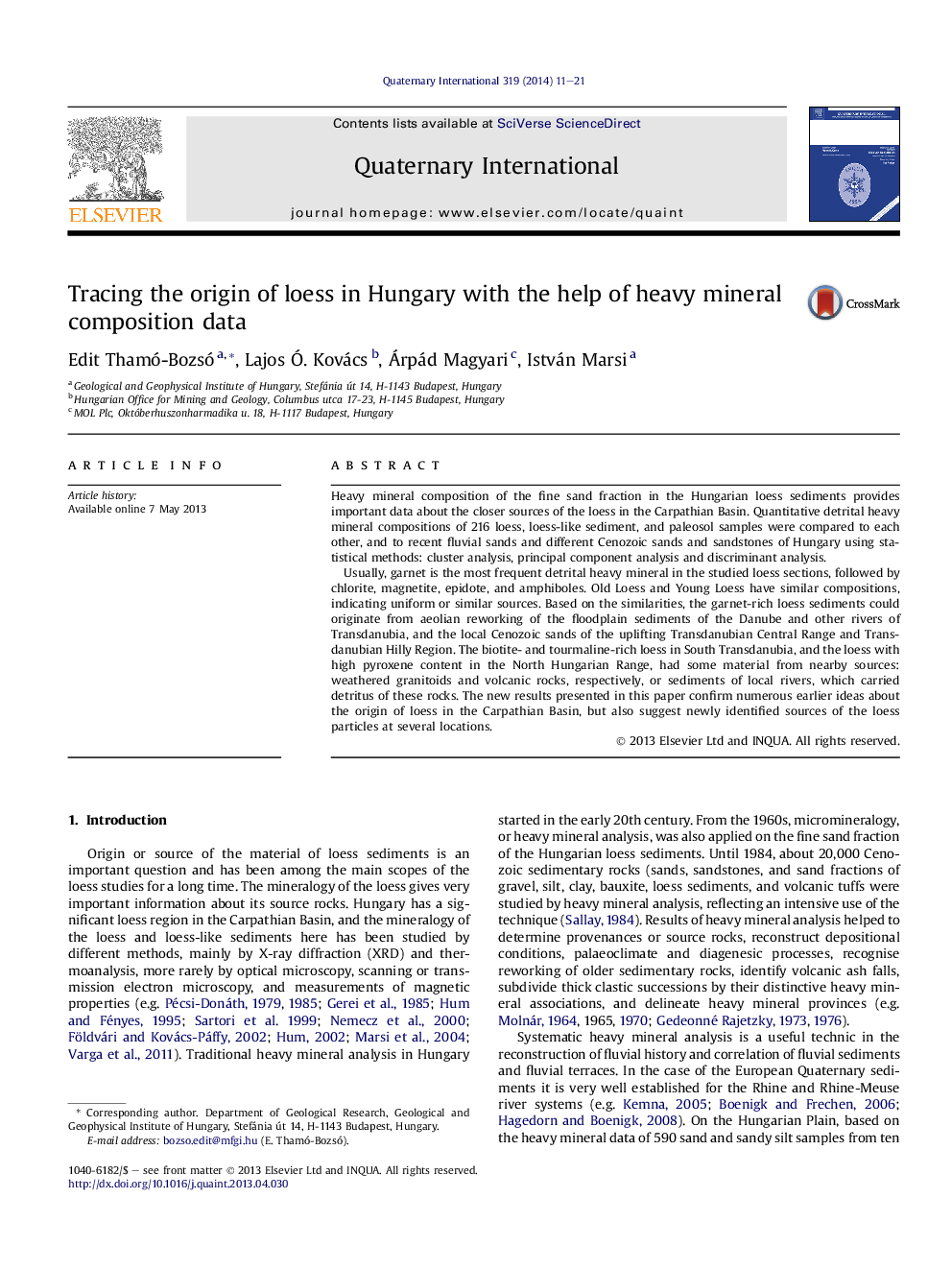| Article ID | Journal | Published Year | Pages | File Type |
|---|---|---|---|---|
| 1041963 | Quaternary International | 2014 | 11 Pages |
Heavy mineral composition of the fine sand fraction in the Hungarian loess sediments provides important data about the closer sources of the loess in the Carpathian Basin. Quantitative detrital heavy mineral compositions of 216 loess, loess-like sediment, and paleosol samples were compared to each other, and to recent fluvial sands and different Cenozoic sands and sandstones of Hungary using statistical methods: cluster analysis, principal component analysis and discriminant analysis.Usually, garnet is the most frequent detrital heavy mineral in the studied loess sections, followed by chlorite, magnetite, epidote, and amphiboles. Old Loess and Young Loess have similar compositions, indicating uniform or similar sources. Based on the similarities, the garnet-rich loess sediments could originate from aeolian reworking of the floodplain sediments of the Danube and other rivers of Transdanubia, and the local Cenozoic sands of the uplifting Transdanubian Central Range and Transdanubian Hilly Region. The biotite- and tourmaline-rich loess in South Transdanubia, and the loess with high pyroxene content in the North Hungarian Range, had some material from nearby sources: weathered granitoids and volcanic rocks, respectively, or sediments of local rivers, which carried detritus of these rocks. The new results presented in this paper confirm numerous earlier ideas about the origin of loess in the Carpathian Basin, but also suggest newly identified sources of the loess particles at several locations.
